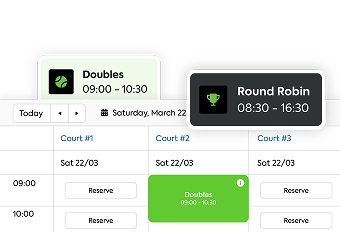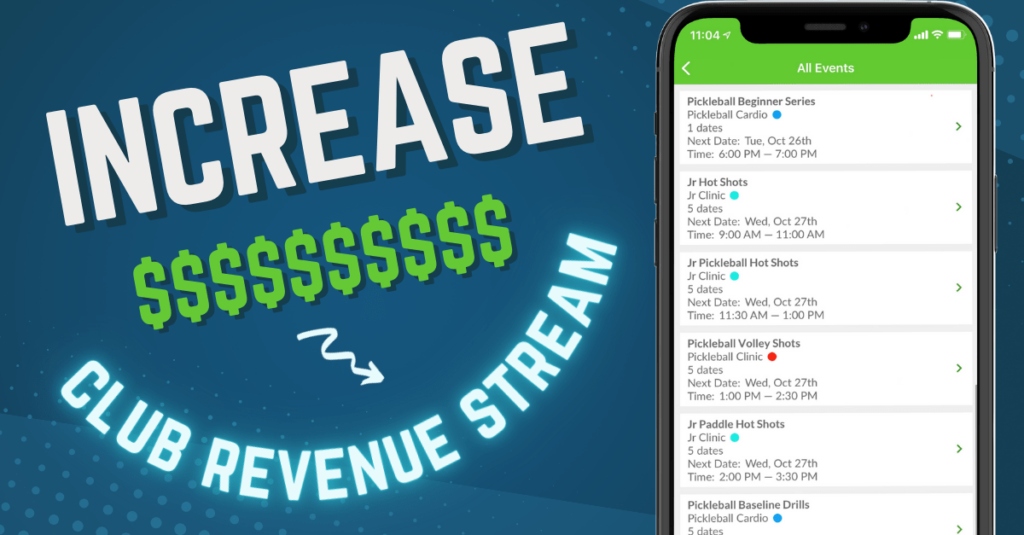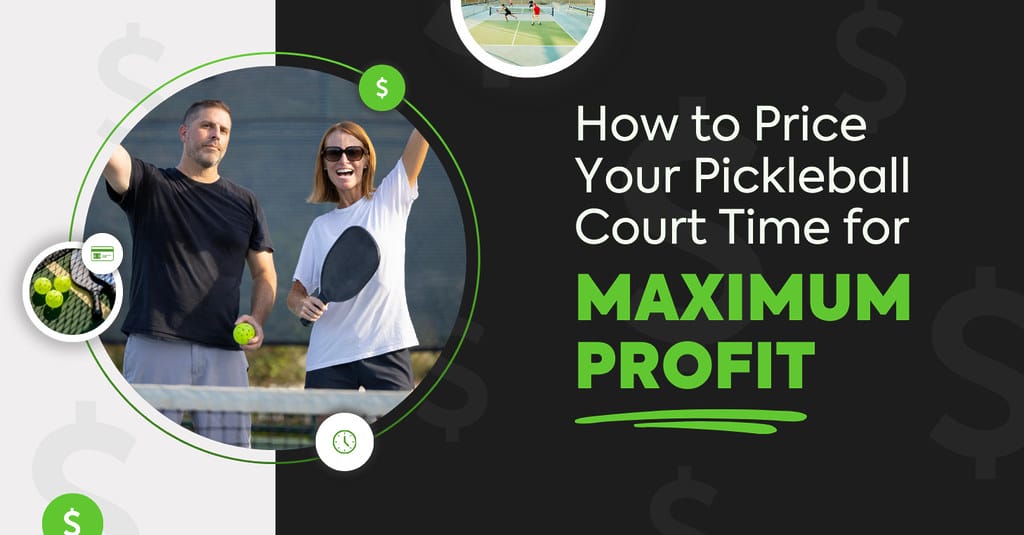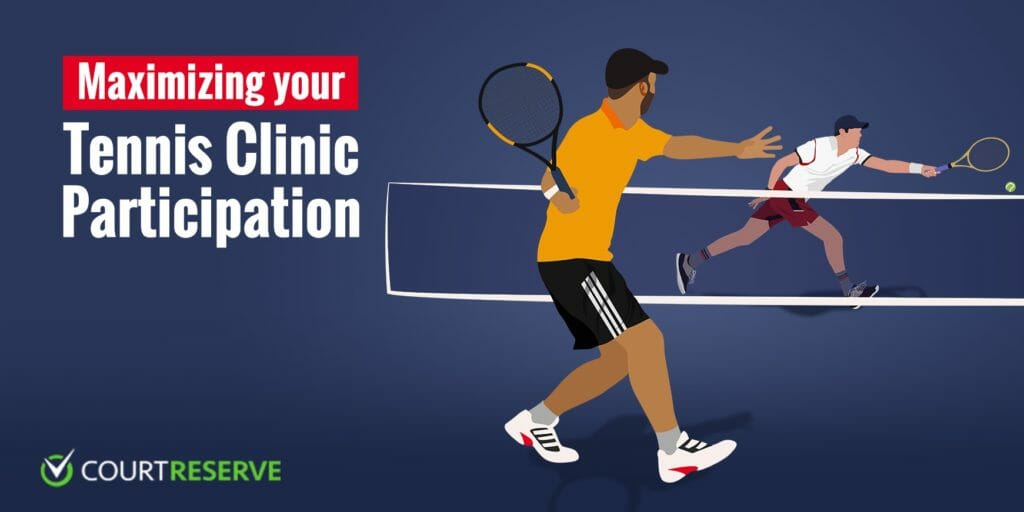What separates a memorable racquet club from a forgettable one? It’s all in the details: the pro who remembers their name, the replay camera that captures a great point, the smooth check-in that makes them feel like a regular. These are signals that say, you belong here.
Those are the moments that turn service into experience, and they matter more than ever. 88% of consumers say the experience a company provides is as important as its products or services — a mindset that now shapes every industry, including racquet sports. [1]
In this blog, we’ll share how modern clubs are finding fresh ways to delight their players — adding variety, simplifying interactions, and elevating the everyday details that make people feel welcome and appreciated on and off the court.
Beyond the basics: Strategies to elevate the player experience at your club
Rising player expectations present a real advantage for racquet sports clubs that go beyond the basics. By layering in thoughtful touches that make each visit smoother, more connected, and more memorable, clubs move from simply meeting expectations to creating experiences players value, remember, and share.
Here are eight ways to make that happen.
1. Offer multi-sport play options
2. Invest in amenities
3. Introduce add-on services
4. Personalize programming and skill development
5. Automate communication
6. Simplify entry and give players flexibility with access control
7. Develop a loyalty program
8. Collect player feedback
1. Offer multi-sport play options to match modern players
Racquet players are branching out more than ever. According to a recent study, 43% of players spend time playing multiple racquet sports, and some clubs are already seeing higher crossover rates.
At Royal Oaks Country Club, for example, nearly 84% of members play both tennis and pickleball — a reflection of how the coaching staff bridges the two sports and shows players how skills translate between them.
That kind of variety fuels retention. It keeps members active, attracts new demographics, and shows that your programs evolve with their interests. On top of that, it also creates stronger players. Cross-training across racquet sports strengthens footwork, strategy, and anticipation, helping players improve faster while staying engaged longer.
So, consider adding trending racquet sports like pickleball, padel, or crossover clinics to give players more ways to stay engaged without requiring major expansion.
2. Invest in amenities that encourage players to stick around
Players are spending more time at racquet clubs — not just to play, but to hang out. Quick matches are turning into longer visits as players stay to talk, watch, and unwind.
As a result, the off-court experience is now a defining part of how players measure a club’s value. That’s where thoughtful amenities come in, turning downtime into part of the experience players look forward to.
A hydration station, small coffee bar, or cafe gives players a natural spot to relax post-match. Comfortable lounges or viewing areas encourage connection between games. And a pro shop stocked with demo gear, custom apparel, or same-day restringing adds convenience and value that players notice.
Digital amenities can do the same. A mobile app for your club or integrations like DUPR and Swish make it easy for players to track progress, manage schedules, and stay connected on their own time — extending the club experience beyond the courts.
The point is, you don’t need large-scale or high-end amenity upgrades to make an impact. Converting an underused corner into a lounge or adding a self-serve drink station creates space for players to slow down and stay a while. And those are the types of experiences that turn a routine visit into one that feels worth repeating.
3. Introduce add-on services that surprise and delight
Add-on services give clubs new ways to elevate the experience and generate revenue — blending play, tech, and personalization in ways that feel fresh, modern, and memorable.
Match-recording tools like Save My Play let players relive their highlights, study their form, or share clips with friends. Other paid extras, like massage chairs or even sports simulators, add variety and create new opportunities for players to engage and spend.
The goal is to surprise players with value. Offering a few well-chosen add-on services helps your club stand out in a crowded market, generates new revenue streams, and gives players more reasons to participate and share their experience with others.
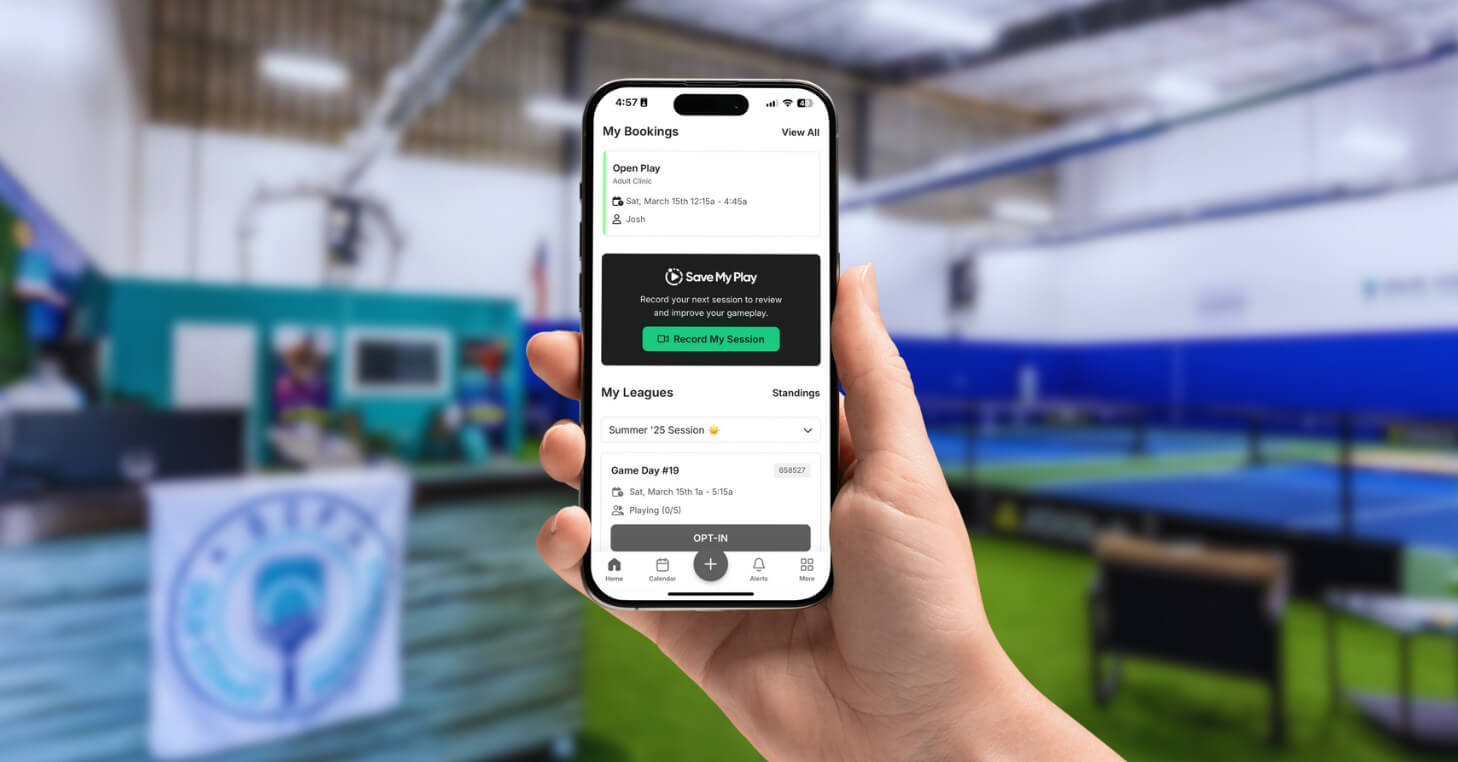
4. Personalize programming and skill development opportunities
Every player walks through your doors for a different reason — competition, connection, confidence, or just a break from the day. Personalization is how you meet each of those needs without stretching your resources thin. When programs and play formats reflect how people actually live and play, satisfaction and retention rise together.
That level of understanding starts with analyzing your player base and identifying distinct segments. Ask questions like:
- When are your courts busiest, and who’s playing during those times?
- Which programs fill up fast, and which ones fade?
- What kinds of matches or formats create the most energy and connection?
The answers often reveal opportunities hiding in plain sight, and a clearer picture of what your players truly want from your club.
Club Tennis de la Salut used this approach, partnering with a marketing agency to map out player personas: the early-morning solo hitter, the competitive league athlete, and the busy parent juggling fitness with family time.[2]
Then, they built out specific play formats and services around that, such as weekly parent-child doubles with optional coaching. That segmentation helped players feel recognized and drove a 27% lift in retention.
That’s the power of personalization. It’s all about designing experiences that match real behavior.
5. Automate consistent and targeted communication
When players get club info and updates before they even have to ask, it sends a simple but powerful message: we value you and your time.
Picture a friendly reminder the night before a clinic, a quick rain update before they leave the house, or a short follow-up after a match with a link to book again. These moments make players feel seen and prioritized. And that feeling sticks.
Maintaining that level of communication manually is tough, though — sometimes impossible as your tennis or pickleball club grows. Automation solves that. It keeps communication running quietly in the background, ensuring players always have the information they need right when they need it.
And with tools like Patch Retention, clubs can personalize every touchpoint — confirming bookings, sending event reminders, or re-engaging inactive members automatically. Each message feels timely and thoughtful, helping your club stay one step ahead.
6. Simplify entry and give players more freedom to play with access control
Flexibility and convenience are among the biggest drivers of player satisfaction. Players want to play when it fits their lives — early before work, late after dinner, or in those quiet off-hours between. Access control systems make that possible.
With secure PIN codes, mobile entry, or touchless check-ins, authorized players can access your facility on their own time — no front desk required. It’s an effective upgrade that expands access while keeping your facility secure and efficient.
For players, that freedom builds loyalty. They can play when they want and never feel limited by hours or staffing. For operators, it means better court utilization, new opportunities for off-peak revenue, and less strain on resources, all without sacrificing security or control.
7. Develop a loyalty program that rewards engagement
Loyalty programs give clubs a way to recognize player participation — rewarding consistency, involvement, and enthusiasm in ways that keep players motivated and connected.
A well-designed program might reward players for things they’re already doing: booking early, attending regularly, inviting guests, or joining new events. Those small acknowledgments can turn routine participation into a sense of progress and pride.
These loyalty programs also give staff valuable insights into engagement patterns — including who’s thriving, who’s dropping off, and where to focus outreach. It keeps your most active players energized while helping you spot opportunities to re-engage others.
At its core, loyalty is about recognition. Players who feel their effort is noticed build a deeper connection to the club. And, it gives them one more reason to come back.
8. Collect feedback to keep improving the experience
Ask players to share their thoughts through short, friendly surveys after events, lessons, or new programs.
Keep it quick and conversational: “How was your experience today?” or “Would you join this clinic again?” A few questions are enough to spot patterns and identify what’s working — and what’s not.
The key is what happens next. Acknowledge responses and, when possible, make visible changes based on what you learn. It shows players that their input actually shapes the experience, turning feedback into trust.
When players see that their opinions matter, they feel like part of the process — not just participants. That sense of collaboration is what keeps your programs fresh and your community strong.
The details define the experience
Great player experiences don’t happen by accident. They’re built through intentional, strategic choices — the warm greeting, the quick reminder, the replay that makes someone smile. Those are the moments players remember long after they’ve left the court.
Refining those moments is what sets great clubs apart. It’s about amplifying the details that matter most to players with care and consistency. When every touchpoint — from booking a court to grabbing a snack post-match — feels deliberate, the entire experience feels elevated.
That’s the new competitive edge. Experience is the reason players choose, stay, and advocate. The clubs that lead the next wave of growth will treat it as a strategy — where communication is proactive, technology fades into the background, and every detail is designed around the player.
[1] Salesforce, “What Is Customer Experience (CX)? Definition, Importance & Strategy,” Salesforce Blog, https://www.salesforce.com/blog/customer-experience/
[2] Versys Media — Marketing Agency, https://www.versysmedia.com


